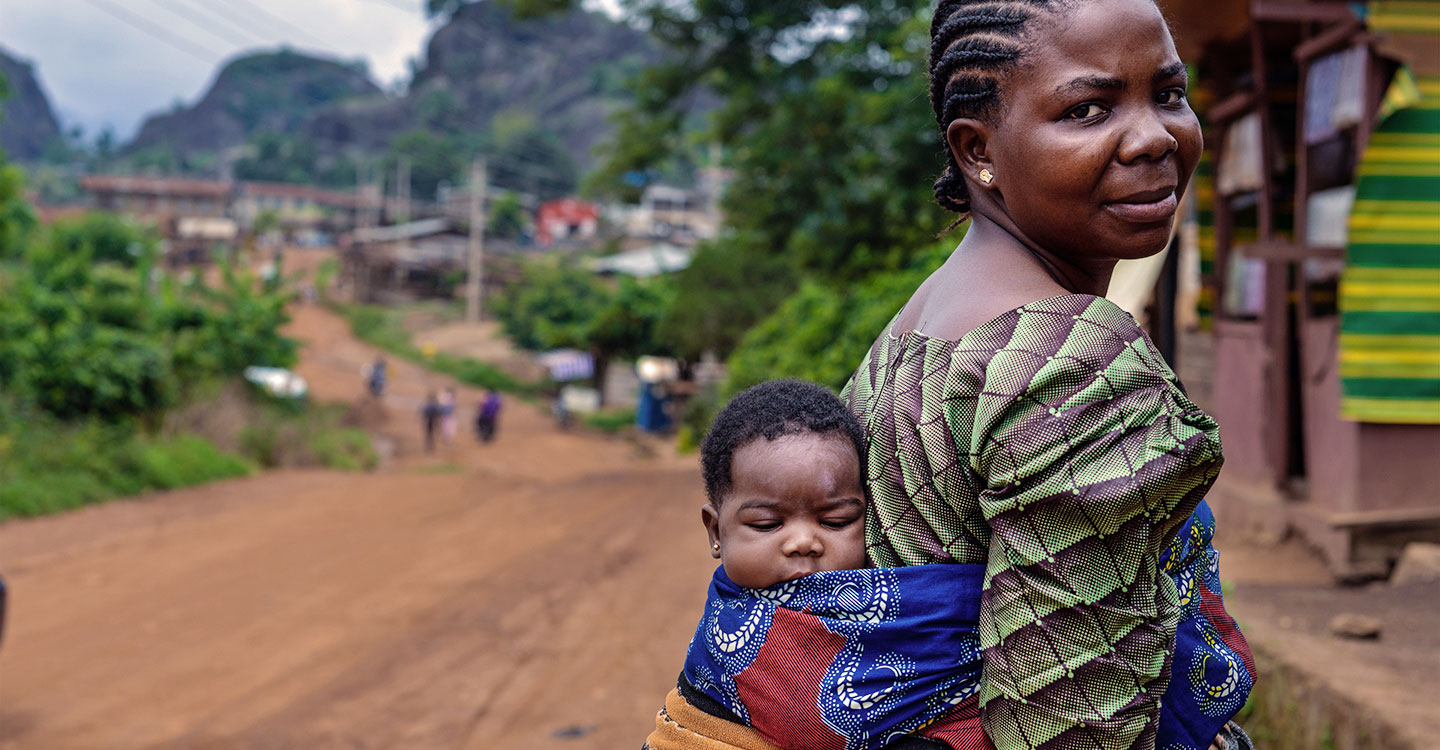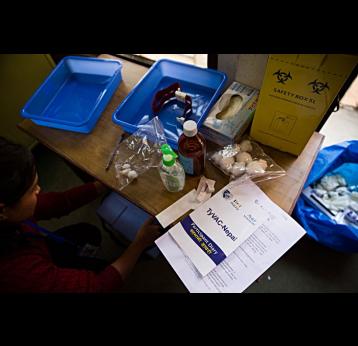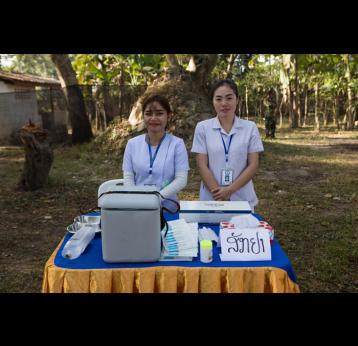Gavi's impact
Gavi-supported yellow fever vaccine campaigns in 14 African countries have protected over 133 million people
Yellow fever vaccine introduced in routine immunisation systems in 17 countries in Africa
Over 62 million doses from the emergency stockpile have reached Gavi-supported countries experiencing yellow fever outbreaks
Yellow fever vaccine is highly effective: a single dose leads to long-term, probably even lifelong, immunity in 99% of people vaccinated.
Gavi has invested more than US$ 500 million in yellow fever control since 2001, focusing on African countries where the vast majority of yellow fever deaths occur. The Vaccine Alliance funds routine vaccine introductions, an emergency stockpile and preventive vaccination campaigns.
Gavi’s support is closely aligned with WHO's Eliminate Yellow Fever Epidemics (EYE) Strategy, which aims to coordinate yellow fever control at the global level. With more than 50 partners involved, the EYE partnership supports 40 at-risk countries in Africa and the Americas to prevent, detect, and respond to yellow fever suspected cases and outbreaks.
LIFE-SAVING PREVENTIVE CAMPAIGNS
Since 2011, Gavi-supported prevention campaigns have been organised in 14 countries in Africa, protecting more than 133 million people in Benin, Burkina Faso, Cameroon, the Central African Republic, Côte d’Ivoire, Ghana, Guinea, Liberia, Mali, Nigeria, Senegal, Sierra Leone, the Sudan and Togo.
Yellow fever campaigns together with routine immunisation programmes supported by Gavi have averted over 1 million deaths since 2010. The campaigns have significantly reduced the risk of yellow fever outbreaks in Africa.
However, rapid urbanisation and environmental changes are shifting the geography of yellow fever, and the virus is now affecting areas previously considered non-endemic. Recent yellow fever epidemics, which have spread outside of Africa, underline the continued global threat posed by yellow fever.
Due to the continued risk of outbreaks, coupled with the improved supply situation for the vaccine, Nigeria resumed its phased preventive yellow fever vaccination campaign in 2017, continuing with Gavi-supported phases in 2019-2021. Nigeria has also developed a long-term yellow fever control plan, which is closely aligned with the WHO’s EYE strategy.
ROUTINE IMMUNISATION IN 17 COUNTRIES – BUT COVERAGE REMAINS LOW
Despite the success of mass campaigns, challenges remain. The low routine yellow fever immunisation coverage across Gavi-supported countries is still a reason of concern, averaging out at about 43% in 2018; although this represents a slight increase from the past few years, it’s still well below the recommended threshold.1
Three high-risk countries (Ethiopia, South Sudan and Uganda) have yet to introduce the vaccine into their routine systems, while Sudan is planning to introduce in 2020. In addition, surveillance and diagnostics systems, which play a key role in early detection and optimal vaccination response, are insufficient in many yellow fever-endemic countries.
EMERGENCY STOCKPILE RESPONDS TO OUTBREAKS
Several outbreaks of yellow fever occurred in 2018, including in Nigeria where there have been episodic outbreaks since September 2017. Nigeria was able to access vaccines from the Gavi-funded stockpile on four separate occasions in 2018; in total, more than 6.5 million doses were shipped to the country.
Other countries affected by yellow fever outbreaks in 2018 included Congo and Ethiopia. Although at the time not eligible for Gavi support, Congo was granted exceptional approval to access the vaccine stockpile without the need to repay the procurement cost due to its change in GNI and impending return to Gavi eligibility. The situation in Ethiopia was especially concerning, as the country has not introduced yellow fever into its routine immunisation programme, along with South Sudan, Sudan and Uganda.
The International Coordination Group (ICG), with the support of Gavi, has deployed millions of doses of the yellow fever vaccine worldwide in response to outbreaks. The ICG includes representatives from WHO, UNICEF, Médecins sans Frontières, and the International Federation of Red Cross and Red Crescent Societies.
In the event of an outbreak, Gavi-supported countries can request vaccines from the stockpiles free of charge. Other countries can access Gavi-funded stockpile vaccines but are required to reimburse the cost of the vaccines once the outbreak has come to an end. Financial support is also available to help the planning and implementation of emergency vaccination campaigns. For more details, visit www.who.int/csr/disease/yellowfev/global_partnership/en/.
1 WUENIC, 2019.
The issue
Outbreaks of yellow fever continue to erupt despite availability of an effective vaccine since the 1930s
Geographic focus of the disease has shifted from West to Central and East Africa
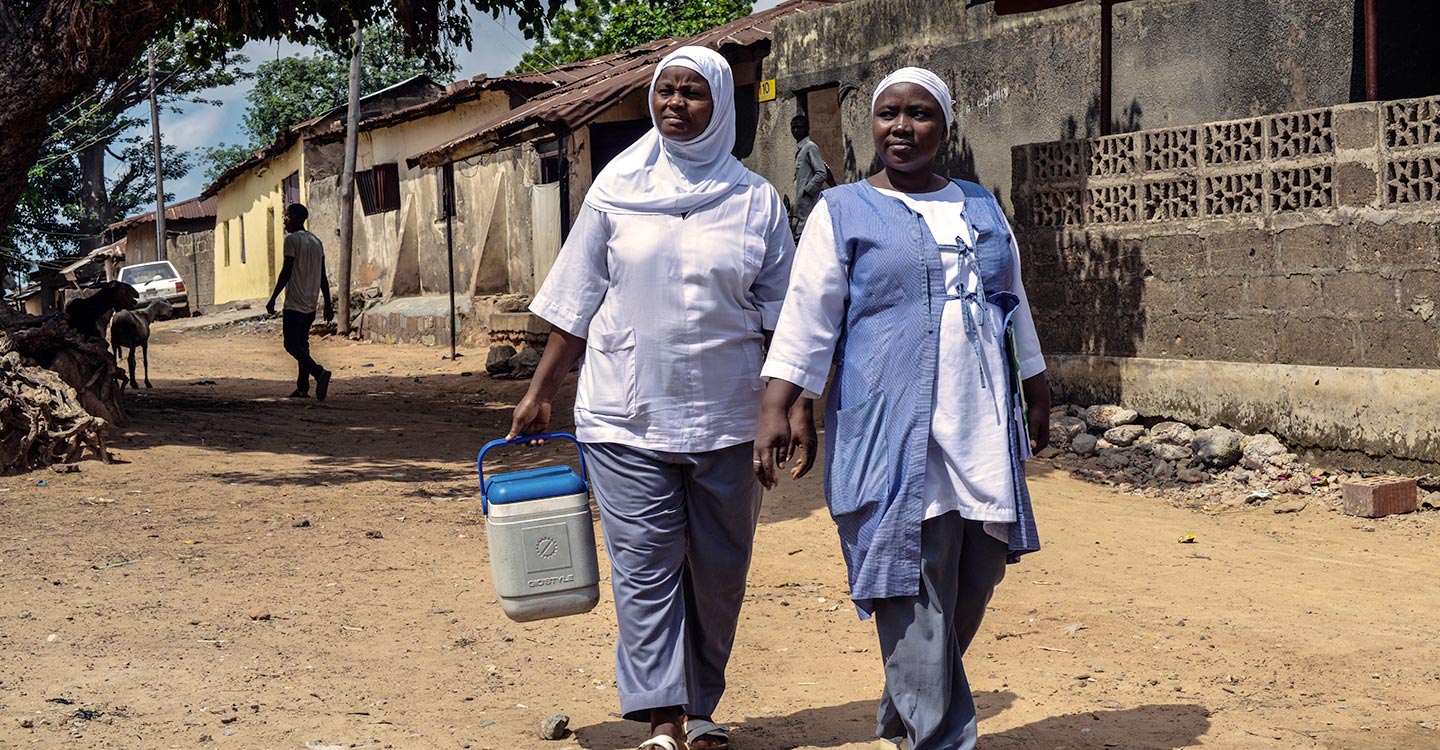
Outbreaks of yellow fever continue to erupt despite availability of an effective vaccine since the 1930s
Geographic focus of the disease has shifted from West to Central and East Africa
UP TO 60,000 YELLOW FEVER DEATHS EVERY YEAR
Before the development of a life-saving vaccine in the 1930s, the yellow fever virus caused devastating epidemics in large cities in Africa, the Americas and Europe.
In the last 20 years, a combination of declining population immunity, rapid urban migration, climate change, deforestation and an increase in mosquito vectors has led to a resurgence of yellow fever. Forty-seven countries in Africa (34) and Central and South America (13) are endemic, or have regions that are endemic, for yellow fever. Yellow fever infects an estimated 840,000–1.7 million people in Africa each year, resulting in 84,000–170,000 cases and 29,000–60,000 deaths.1
Rapid urbanisation has exacerbated the issue. This is because it concentrates people, many of whom have not been immunised, in settings where the yellow fever virus thrives. Cities provide fertile breeding grounds for mosquito larvae, as stagnant water collects in water containers, cans and tyres. Overcrowded housing further accelerates the spread of the virus.
DISEASE BURDEN
An acute viral haemorrhagic disease transmitted by mosquitoes, yellow fever causes devastating epidemics in areas where infected mosquitoes can come in contact with people who are not vaccinated. Death rates can be as high as 50% among those severely affected.
Yellow fever can be prevented by a safe, affordable and highly effective vaccine. One injection protects an individual for at least 35 years, and possibly for life.
Yellow fever cannot be eliminated. However, the risk of outbreaks can be substantially reduced by immunising at least 70% of the at-risk population. In order to achieve this high coverage and maintain immunity for life in the 34 endemic countries in Africa, Gavi supports routine immunisation and preventive campaigns in eligible countries.
AFRICA RISK
The recent resurgence of yellow fever is especially pronounced in West and Central Africa. In these regions, mass vaccination campaigns in the 1930s–60s effectively eliminated the virus until the early 1990s.
The alarming trend started in equatorial Africa with a 1990 epidemic in Cameroon, and then spread across the region. By 2005, failure to immunise successive birth cohorts through routine immunisation had led to approximately 200,000 yellow fever cases and more than 50,000 deaths in West Africa's 12 highest-risk countries.
Today, the virus poses the greatest threat to 900 million people in more than 47 endemic countries – 34 in Africa and 13 in Central and South America. Shifts in migration patterns and environmental changes are affecting the geography of yellow fever. Outbreaks are now occurring in areas historically considered non-endemic.
The changing epidemiological spread of the disease has caused several outbreaks in previously low-risk regions of Angola, Cameroon, Central Africa Republic, Chad, the Congo, Côte d'Ivoire, the Democratic Republic of the Congo, Ethiopia and Uganda.
Faced with an increasing risk of large-scale urban yellow fever outbreaks, WHO has revised its long-term yellow fever control strategy in collaboration with Gavi and other partners. This emphasises the importance of international health regulations in preventing cross-border spread of the virus. It also highlights the need to enhance surveillance to detect, confirm and respond to yellow fever cases in a timely way. The strategy is closely aligned with Gavi-funded yellow fever immunisation strategies.
MATCHING SUPPLY AND DEMAND OF YELLOW FEVER VACCINE
Phased preventive mass immunisation campaigns that had been put on hold due to supply constraints were resumed in 2018, including those in Ghana and Nigeria, following an improved supply situation. Sudan will also be able to complete their nationwide rollout of their phased campaign in 2019.
Nevertheless, some challenges remain in coordinating available supply with expected demand in certain years, in particular for preventive mass campaigns as recommended by the EYE strategy. We continue to work with manufacturers to ensure that future demand can be met, as well as work with EYE partners to support countries on their planning for yellow fever activities.
1http://www.who.int/csr/disease/yellowfev/YellowFeverBurdenEstimation_Summary2013.pdf
Gavi’s response
Gavi provides yellow fever support for routine immunisation, campaigns in high-risk countries and emergency stockpiles in case of outbreaks
Yellow fever vaccine is one of the priority vaccines that Gavi has supported since its foundation in 2000. We aim both to protect populations at risk and to reduce the need for emergency response
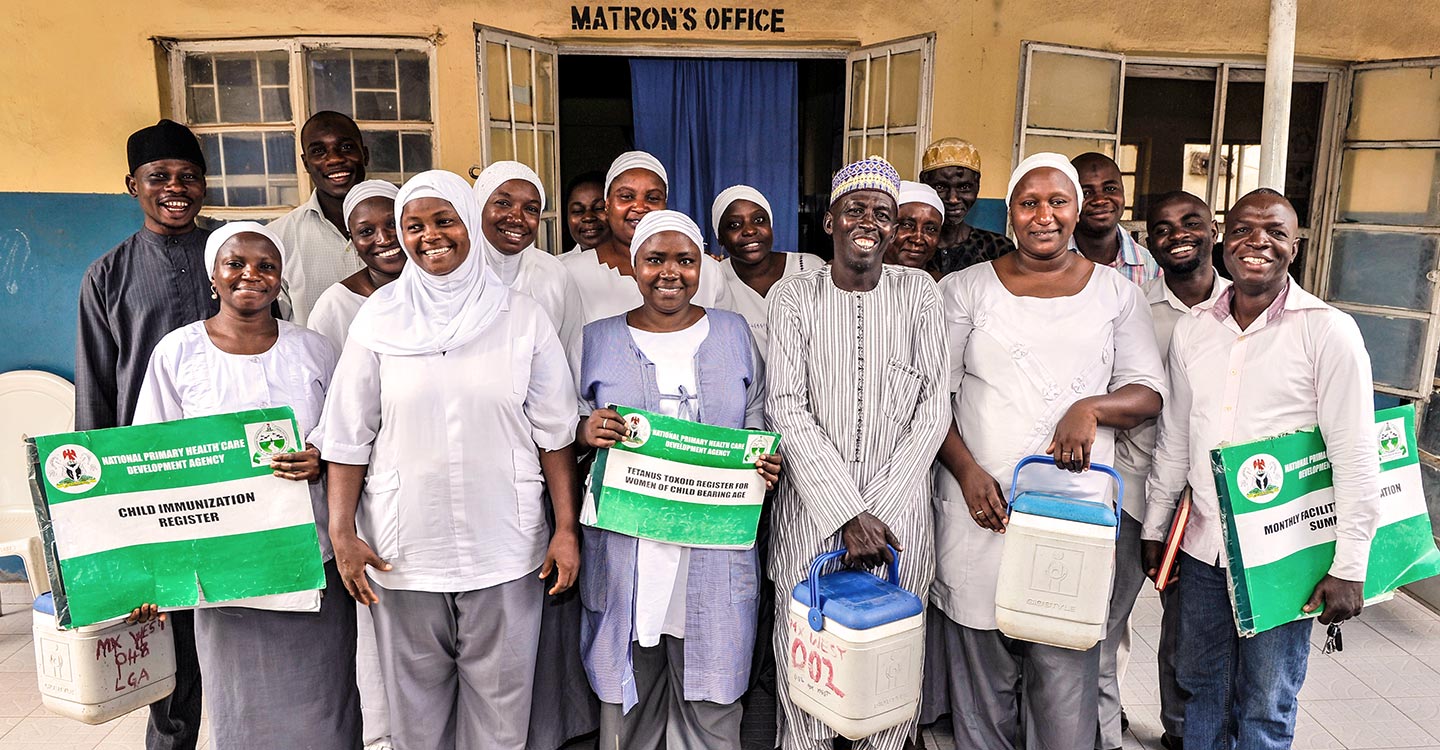
Gavi provides yellow fever support for routine immunisation, campaigns in high-risk countries and emergency stockpiles in case of outbreaks
Yellow fever vaccine is one of the priority vaccines that Gavi has supported since its foundation in 2000. We aim both to protect populations at risk and to reduce the need for emergency response
GAVI FUNDING SUPPORT
-
Preventive campaigns
Eligible countries can receive support for preventive campaigns on a one-dose vaccination schedule, as well as associated supplies. Countries receiving support for preventative campaigns do not get a vaccine introduction grant. However, Gavi provides up to US$ 0.65 per individual in the target population of the campaign to help cover operational costs (expected to cover approximately 80% of the total estimated cost). Countries must meet the remaining operational expenses.
-
Introduction into the routine immunisation system
WHO recommends that all countries at risk incorporate the vaccine into their national routine immunisation programme.
Gavi provides support for a one-dose vaccination schedule, as well as associated injection supplies. Countries that are using the vaccine for the first time can also apply for a one-time vaccine introduction grant. It is expected that the government or partners cover the remaining costs associated with the vaccine introduction.
-
Global stockpile for emergencies
Countries eligible for Gavi support can rely on the global stockpile of yellow fever vaccine for use in emergency outbreaks. The stockpile is managed by the International Coordinating Group on Vaccine Provision for Yellow Fever Control. Countries can receive funding to cover emergency vaccination campaigns that draw on the stockpile, as well as support for operational costs of up to US$ 0.65 per person in the target population.
In December 2016, the Gavi Board approved a new approach to facilitate rapid access to vaccines during outbreaks. As part of the new approach, we are making long-term funding commitments to strengthen our response to yellow fever.

